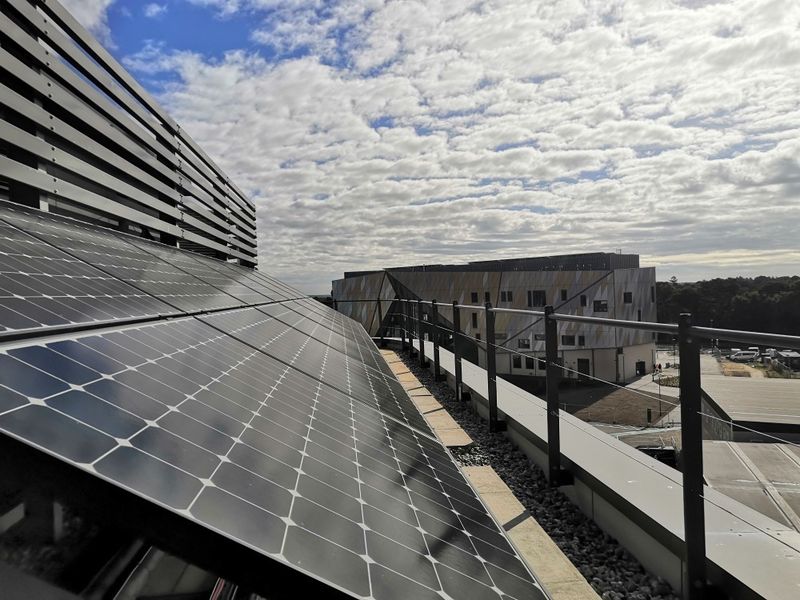Ground Source Heat Pumps: An Effective Technology for Reducing Carbon across Institution Estates
Despite the pandemic and the many challenges higher and further education institutes are currently facing, universities and colleges across the UK are continuing to develop and deliver their estate-wide carbon management plans, contributing to their own net-zero climate change targets and collectively, working towards the UK Government’s target of net-zero by 2050.
One consideration for many institutions is looking at more proactive energy efficiency measures that can deal with occurrences that are affecting estates more frequently, such as the increasing frequency of heatwaves in summer and much colder winters.
Ground Source Heat Pumps (GSHP) are becoming more popular with large estates as an effective technology due to being able to be utilised throughout both the winter and summer seasons and the significant opportunities they provide to reduce carbon compared to other, traditional technologies.
GSHP’s use the temperature of the ground to provide heat for low temperature heating systems including radiators, underfloor or warm air heating systems. The heat is emitted at a higher temperature to the low temperature source it is taken from, whilst only using a relatively small amount of energy.
Things to consider
When looking to install a ground source heat pump, it is worth considering the efficiency of your current estate. Existing buildings can often be designed for heating devices with higher temperatures than heat pumps and can require upgrades to building fabric and air tightness in order to accommodate them. This is due to more traditional, higher temperature emitters being more efficient at countering cold air.
Ground source heat pumps are generally found to be more expensive, being two to four times more than a conventional gas boiler or chiller. Although the initial cost may be more, the lower operating costs of heat pumps make them a much more cost-effective option in the long-term.
The installation of a GSHP can provide opportunities for further energy efficiency measures to be installed, maximising the efficiency of the building. For example, if combined with controls, a GSHP can be managed in a way that avoids heating systems running unnecessarily, further reducing energy consumption.
Bournemouth University’s Ground Source Heat Pump
Bournemouth University has had a carbon management plan in place for over 10 years. It’s more recent CECAP (Climate and Ecological Crisis Action Plan) outlines the universities plans to reach net-zero by 2025/26 against a 2005/06 baseline.
The university has recently installed its third ground source heat pump, now providing the university with a heat pump in three of its buildings. Two of the ground source heat pump installations are twin systems which will allow the university to undertake simultaneous heating and cooling. They are also in the process of running some tests on one of the university’s older buildings to examine the feasibility of retrofitting air source heat pumps.
Michael Diamond, Energy Officer at Bournemouth University, says: “Whilst the immediate financial benefit through energy savings from our current heat pumps is minimal due to the price difference between electricity and natural gas, thanks to schemes such as RHI, we have seen a financial benefit in the installation of heat pump technology across some of our buildings.
“At present we don't have any buildings which are solely heated through GSHP’s, however the addition of them running alongside traditional gas boilers provides a foundation on which to build towards more sustainable and lower carbon space and water heating, whilst also providing us with built in redundancy for our heating systems. We have also benefited from using GSHP’s to provide cooling for our buildings.
“Overall, our current experience with heat pumps, specifically ground source, has been a positive one and we are looking at ways to incorporate heat pumps into our existing building stock. We are continually striving to reduce our carbon footprint and low carbon heat is a part of those future plans, along with reducing our energy demands through efficiency and to increase our onsite generation capacity beyond its current peak output of approximately 500kW from solar PV.”
Laura Couldrey, Programme Manager for the Universities Programme at Salix, said: “We have been supporting Bournemouth University’s carbon management plans for a number of years now through our Recycling Fund, a ring-fenced fund with matched capital provided by Salix and Office for Students with a contribution provided by the organisation.
“We’re proud to see a substantial amount of energy efficiency upgrades being made and the incredible impact this is having on our planet. We look forward to continuing to work with Bournemouth on the installation of future carbon reduction projects.”
Salix is continuing to support further and higher education institutions across the UK by providing interest-free finance for investment in carbon reduction projects such as ground source heat pumps.
To date, over £142m has been in invested in over 4,000 projects across approximately 100 universities.
Salix is sponsoring two categories at this year’s Green Gown Awards, Sustainability Champion – Staff and Sustainability Champion – Students.
To find out who has been shortlisted for the Green Gown Awards 2020, visit the GGA website here.
Author: Natasha Mylett, PR and Marketing Manager, Salix Finance
Follow Salix Finance here.












